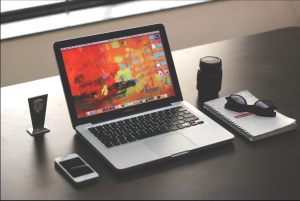1 Activity 1.1 – Picturing Toxic Heritage: Photo Essay, Reflection, and Research
Audrey Ricke

Associated Readings – Hyperlinked
Peter Carskadon Little and Grace Abena Akese, “Toxic Landmarking and Technoprecarious Heritage in Ghana.”
Targeted Skills
- Creativity and Reflection
- Optional Activity: Library Research, Problem-Solving, Field Research- Interviewing
Suggested format:
Depending on the options selected, this activity can be an introduction to the topic of toxic heritage (suitable for secondary or higher ed. students), or structured as a semester-long project for undergraduate or graduate students with successive research deliverables assigned (ex. bibliography of research sources, abstract/outline of paper, poster, presentation, etc.).
Directions:
The idea of toxic heritage can seem disconnected from daily life. It can appear to a problem somewhere else, impacting other people. But we’re all enmeshed in activities that create environmental harm. Those activities have a history and they’re part of broader systemic and structural forces. To help picture or imagine toxic heritage in your life,
- identify multiple products that you use daily or weekly that contain one or more of the mined substances featured in Toxic Heritage (2024) (e.g. titanium dioxide, lithium, copper, gold).
- create a photo collage or other visual representation of the items.
Reflection option:
Using your collage, reflect on the prominence of this sourced material in your life and create an audio or written response or in-class sharing to accompany your collage that answers the following questions:
- What memories are associated with these products?
- How did doing this project and reading about the toxicity associated with this sourced material impact your memories?
- How might it impact your future consumption in daily life or at memorable periods in your life (e.g. holiday celebrations, family gatherings)? If it had no impact, please explain why.
Optional next steps:
- Show and explain your collage to three people that are not in your class or group. Ask for their initial reactions and note their responses. Continue the conversation by asking them the same questions you reflected on and note their responses. Discuss and share with your group, class, or instructor:
- What surprised the three people you worked with the most?
- How did it impact them?
- What did they already know?
- What do their perspectives tell us about next steps for addressing the “toxic” side of “toxic heritage”?
Research option 1 –
What alternatives to this product are there to consume?
What alternatives are there on the production side? [If you are working in or plan to work in the production side, what are some of the pressures or barriers to reducing the “toxic” side and how can these be addressed?]
Share what you find with your class, group, and those you spoke with about the project.
Research option 2 –
Trace your component through its supply chain (eg. mining, production, waste). Investigate some of the impacts the substance has had on people, places, and the environments where it is sourced. Include the products and techniques used to mine and process the mineral into the chosen product. Consider picking one or more touchpoints for the mined substance, such as places along the commodity chain, to focus on, but still take a holistic approach and look at the impacts on people, places, and the ecosystems for that site/touchpoint.
If your product is an electronic, consider its post-use disposal (eg. e-waste recycling – see Little & Akese Ch. 8).

